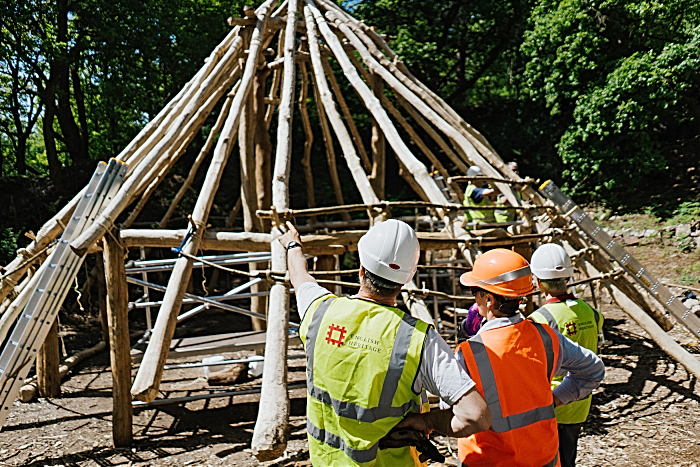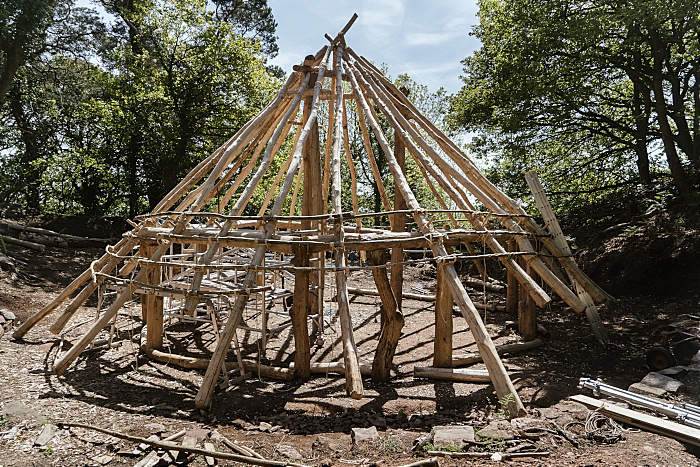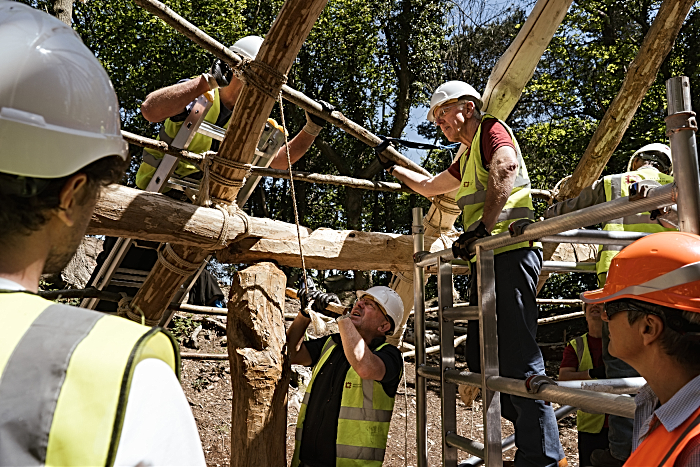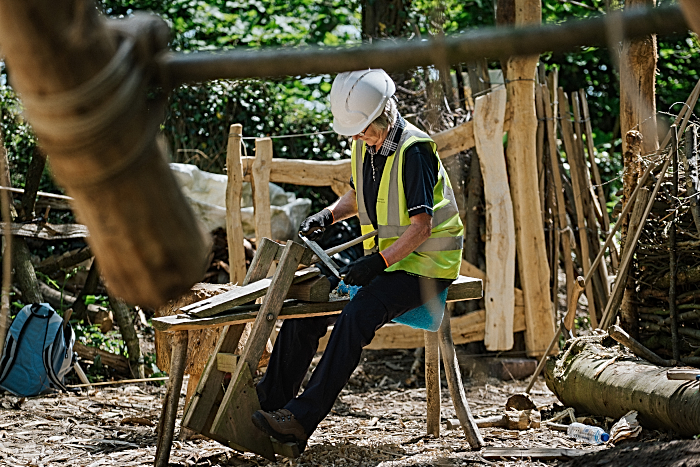
A Bronze Age house is being reconstructed by English Heritage volunteers at Beeston Castle near Nantwich – 4,000 years after it disappeared.
Workers are using authentic tools and archaeological evidence informed by the recent discoveries at the Bronze Age settlement in Cambridgeshire as well as earlier discoveries at Beeston Castle.
People had lived on the Cheshire rocky crag long before the existing medieval castle was built.
It was a particularly important defended settlement and metalworking centre from the late Bronze Age.
In the 1970s and 80s, archaeologists discovered traces of post-holes for what was called House Six, a thatched Bronze Age roundhouse with walls of wattle-and-daub – a mixture of twigs, earth and clay.
Bronze Age objects such as axes and knives were also uncovered.
Now a team of more than 60 volunteers including a former dentist, a farmer and a nuclear physicist have started to recreate the roundhouse.
Fifteen vertical posts of the roundhouse have been erected, with the horizontal wall plates lifted to form the framework of the house.

Volunteers are making use of authentic tools, recording axe strikes and post-hole depths to help understanding of the Bronze Age and its construction methods.
English Heritage curator Win Scutt said: “Beeston is one of the most important Bronze Age sites in the North West and research over the past few decades paints a fascinating picture of a community who lived and worked there.
“What this project aims to do is bring that research to life – our reconstructed house will give visitors a vivid sense of the Bronze Age at Beeston.”
Luke Winter, the experimental archaeologist leading the project on behalf of English Heritage, said: “It is so rare to have a chance to recreate a Bronze Age building on a site where it once stood, and thanks to our inspiring team of volunteers we are making great progress.
“And by using authentic tools and recording axe strikes and post depths, they are helping to increase our understanding of Bronze Age construction methods.”

John Proudlove, one of the volunteers, said: “It is an amazing experience to be part of this project, a once in a lifetime opportunity to learn about Bronze Age building techniques.
“It is so great to be part of such a fantastic team, all of us working to a common goal. We are building a lasting legacy.”
It is due for completion in October 2019.
The Bronze Age house will help visitors appreciate the lives of those who inhabited the site around 4,000 years ago.



















Recent Comments